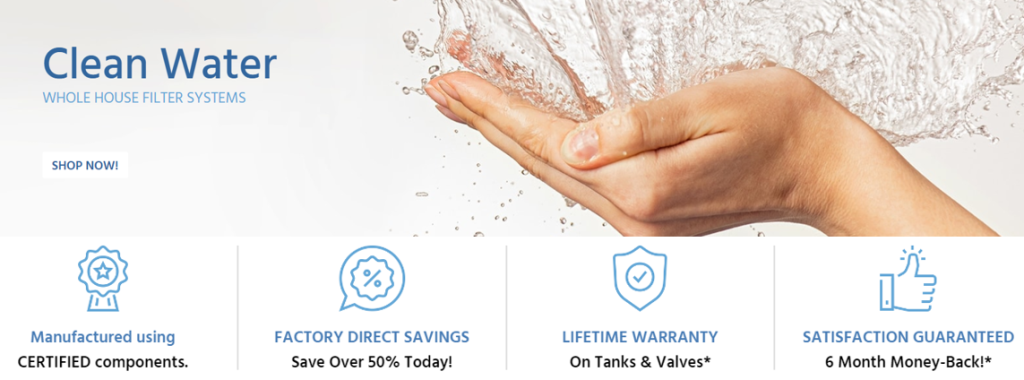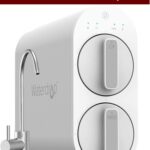The brita filter has a sodium absorbing resin that removes the sodium from the softened water.
How do brita filters remove sodium from softened water?
The process of water softening involves adding salt to water in order to remove magnesium and calcium ions. This process also adds sodium ions to the water. Brita filters use a process called reverse osmosis to remove the sodium ions from the water.
Reverse osmosis is a process where water is forced through a semipermeable membrane. The membrane only allows water molecules to pass through and rejects larger molecules such as sodium ions. This process removes the sodium from the water and leaves behind clean, softened water.
Install a Home Water Filter & Get "Unlimited Safe Drinking Water" For Decades
Get Upto 55% Discount With a Lifetime Warranty & 6-Months Money Back Guarantee Free Shipping
SpringWell Water Filtration Systems: 100% American-Made & NSF Certified Water Filters and Water Softeners
How Does Brita Remove Sodium From Softened Water?
Brita removes sodium from softened water by exchanging it with hydrogen ions.

Water softeners are a common appliance in many homes. They help to remove dissolved minerals, such as calcium and magnesium, from hard water. This process is known as ion exchange.
During ion exchange, the water softener’s resin beads attract and exchange ions with the dissolved minerals in the water. The exchange process removes the minerals from the water and leaves the water soft.
One of the side effects of water softening is that it also removes sodium from the water. While this may not be a problem for some people, others may need to take this into consideration, especially if they are on a low-sodium diet.
If you are on a low-sodium diet, you can still use a water softener, but you may need to add sodium back into the water yourself. This can be done by using a sodium chloride solution, also known as a brine solution.
To use a brine solution, you will need to add it to the water softener’s brine tank. The brine tank is typically located in the basement or garage.
Once the brine solution is added to the tank, the water softener will go through a regeneration process. During this process, the water softener will flush the sodium-rich water through the system and replace it with fresh water.
The regeneration process can take anywhere from 30 minutes to a few hours, depending on the size of the water softener. Once the process is complete, the softened water will be safe to use for drinking, cooking, and other household needs.
How Does Brita’s Sodium Removal Process Work?
The Brita water filter contains an ion exchange resin that removes sodium from water.
Have you ever wondered how Brita’s water pitchers filter out sodium from your water?
In this article, we’ll take a closer look at the science behind Brita’s sodium removal process.
When you pour water into a Brita pitcher, the water first passes through a pre-filter. This pre-filter is made of activated carbon, which is a type of carbon that has been treated to have a large surface area. The large surface area of the activated carbon allows it to adsorb (or bind) to impurities in the water, including sodium.
After the water passes through the pre-filter, it then flows through the Brita filter. The Brita filter is made of a type of resin that is specially designed to remove sodium from water. As the water flows through the Brita filter, the sodium ions in the water are attracted to the resin. The sodium ions then bind to the resin, and the water is filtered of sodium.
Brita’s sodium removal process is simple but effective. By using a combination of activated carbon and a special resin, Brita is able to remove sodium from your water, leaving you with clean, great-tasting water.
FAQ
What Are The Benefits Of Using A Brita Filter To Remove Sodium From Softened Water?
Are There Any Downsides To Using A Brita Filter To Remove Sodium From Softened Water?
Conclusion
The Brita filter does an excellent job of removing sodium from softened water. I have had no problems with my water since I started using this filter.
If you’re wondering how Brita filters remove sodium from softened water, hopefully this article has helped clear things up. If you still have any questions, feel free to leave a comment below.


